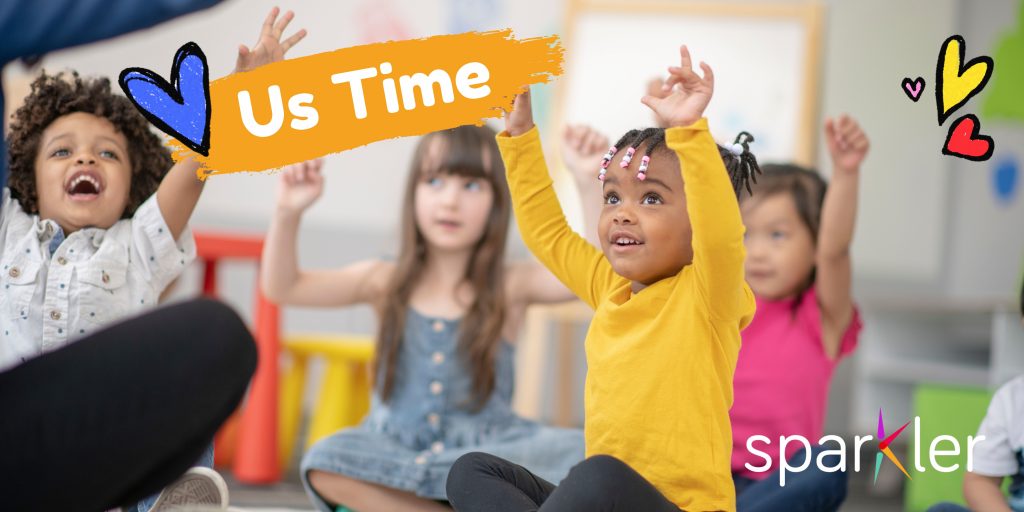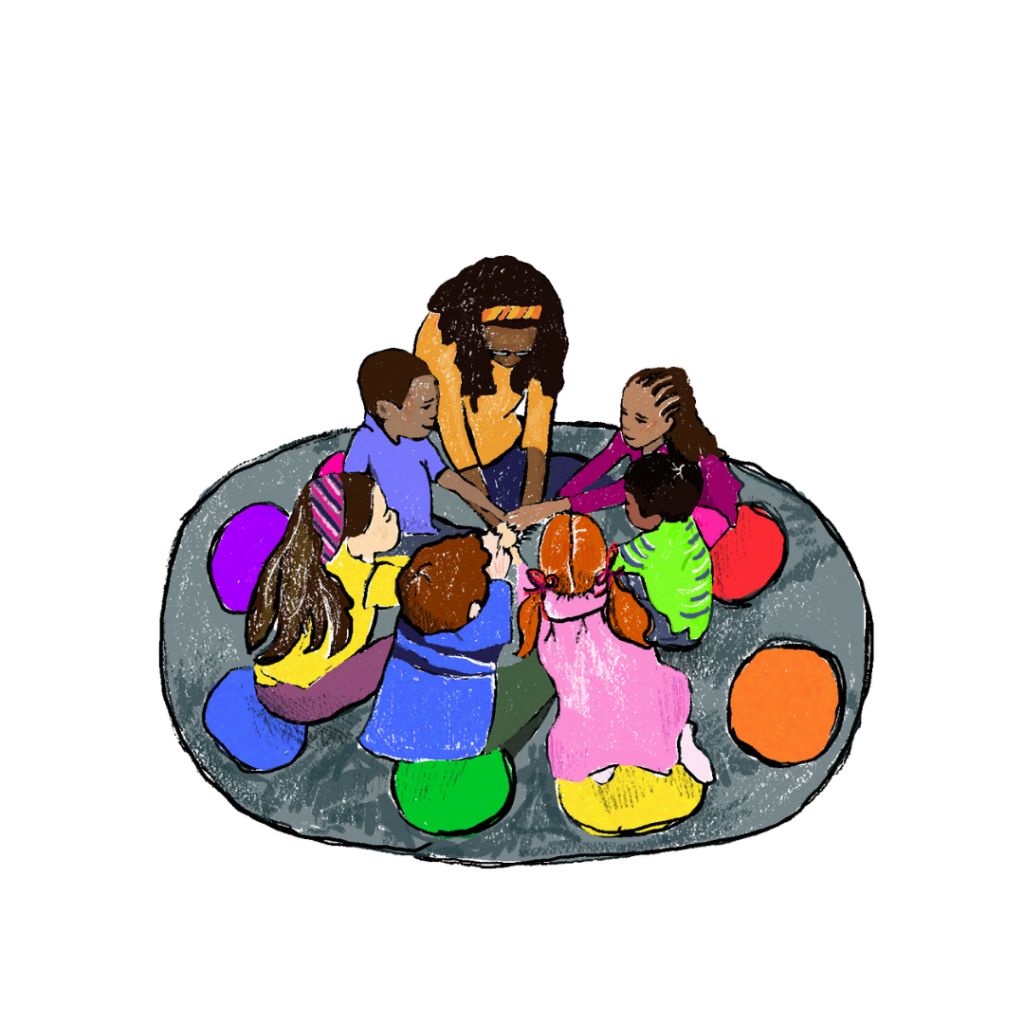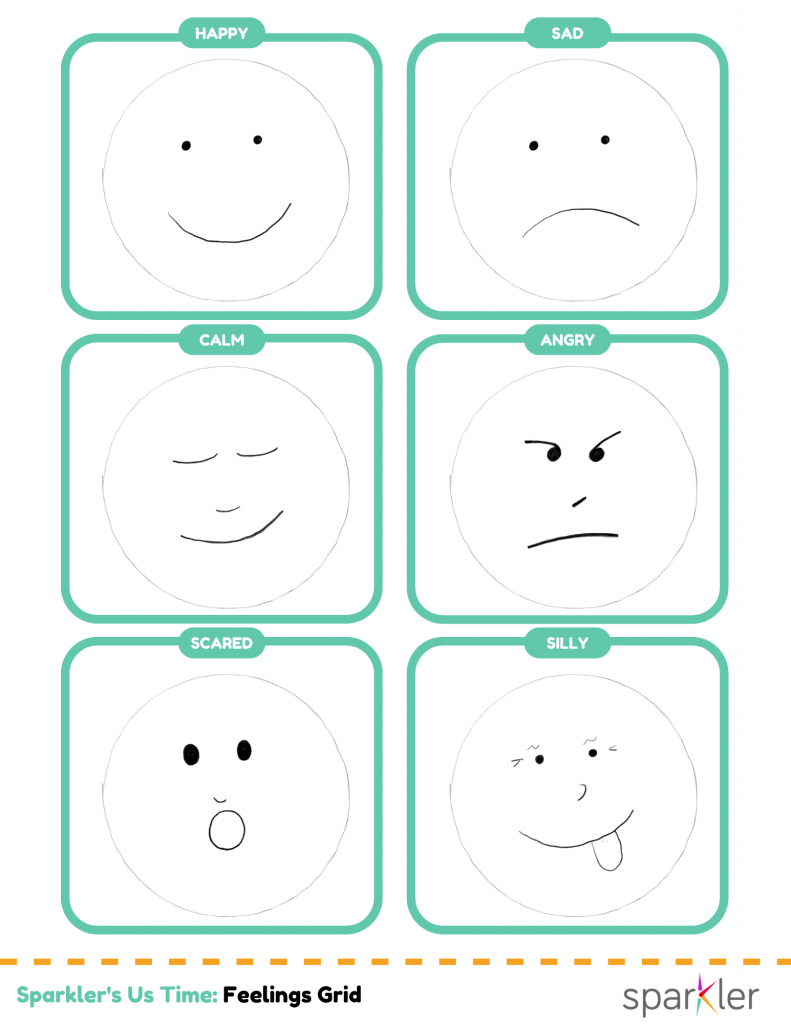Feelings Unit
Lesson 1: What are Feelings?

Lesson Plan: What Are Feelings? (~27 minutes)
Play "Us Time" Song (~2 mins)
Open Us Time with the “Us Time” song. Sing it together or play the video.
Agreements (~4 mins)
Agreements are rules that people decide, together, to follow. When you introduce agreements, ask the students to brainstorm a list of agreements like: paying attention to each other, keeping our hands to ourselves, and giving everyone a turn to speak. Write them down so you can return to the list later to add and recommit.
Play a Feelings Song (~2 mins)
Play “How You Feel” from Noggin’s Big Heart Beats Album (by Oh, Hush! and Grayson DeWolfe).
Discuss "How You Feel" (~3 mins)
After playing the song, talk about it!
- What did you hear in the song?
- How did the song make you feel?
Discuss: What are feelings? (~5 mins)
Littles (3, 4, and 5 year olds):
- Ask children: “What are feelings?” They should name as many feelings/emotions as they can.
- Have everyone repeat the feelings that their classmates share.
- Devise as a class or provide hand motions to go with each feeling.
Toddlers:
- Share a list of feelings/emotions with the class.
- Share faces and movements for each feeling.
- Ask the children to repeat the feelings.
Movement: Dance Your Feelings! (~3 mins)
Listen to “Dance Your Feelings” and invite children to dance along with the different feelings as the music changes.
Activity: Feelings Grid (~4 mins)
- Share the Feelings Grid:
- Ask the children to name and repeat the feelings they hear. You can create motions or moves that go with each.
- Toss a game piece and see where it landed!
- Tell toddlers a story of when you experienced each feeling. Or ask littles, aged 3 to 5, for times when they experienced each feeling.
Closing Discussion: (~2 mins)
- What were the feelings we talked about?
- Can we name them all?
Thank You: Share the Us Time Closing Song (~2 min)
Conclude with “Thank You,” the Us Time goodbye song. Invite students to share what they are thankful for.

Lesson Goals:
- Define “Feelings”
- Name a list of feelings
- Begin to explore each feeling
Materials:
- Physical Space: during Us Time, students gather together on a rug or in a corner of the classroom
- Game piece or small objects to toss
- Feelings grid PDF
Family Engagement Materials
From this lesson:
- “Us Time” song
- “How You Feel” from Noggin’s Big Heart Beats Album
- “Dance Your Feelings” song
- Feelings Grid
- “Thank You” goodbye song
Educator Note:
Suggested teacher letter to send home to parents/caregivers about Us Time Feelings Unit
Listen Together:
- Listen to “What’s in Your Heart,” an episode of the Little Kids, Big Hearts podcast and discuss what you hear!
Free do-together activities from our colleagues at Big Heart World:
- Feelings Memories: Toss coins with the whole family to practice talking about feelings.
- Punching Pillow: What can a child do with a big feeling? Punching a pillow is one strategy grown-ups and children can try.
- How Do We Feel Now? Pretend together to practice talking about feelings. As children understand and become more aware of their OWN feelings, they will also start to look for and recognize those feelings in others. This is the beginning of empathy.
- The “NO!” Song: Sing “no” to the tune of Frére Jacque. When kids use their voices to advocate for themselves, they are taking the first step toward being upstanders!
- Big Rescue: Rescue animals from sand, dirt, or ice. This sort of pretend play is a great way for children to practice helping friends and making the world a better place, too.
- Bird Feeder: Helping to take care of living things, like feeding birds in the park, helps children to develop skills that will lead to empathy — like learning how their actions affect others and imagining how others feel.
Feelings Activities to Share from the Sparkler App:
- Rainbow Feelings (for ages 1.5 – 3): Connect colors and feelings to understand the feelings and work on managing feelings.
- Royal Moods (ages 3-5): Show your royal feelings; acting out different feelings with movements helps children understand the feelings’ meanings.
- Shadow Puppet Feelings (ages 1.5 – 5): Explore feelings with shadow puppets; naming and exploring feelings helps children to recognize their own feelings.
- Feel Your Heart (ages 4-5) Calm down before bed; Encouraging children to create pictures in their minds is a helpful calm-down activity. It also helps with communication.
- Freeze Dance (ages 1.5 – 5): Stop and go dancing helps children practice self regulation.
- Little Helper (ages 1 – 5): Practice helping out at home to learn independence and start taking pride in helping.
- Animal Bath (ages 1 – 3): Practice cleaning animals to build empathy.
Articles to Share:
Teaching Your Child to Identify and Express Emotions (National Center for Pyramid Model Innovations)
Helping Children Identify Their Emotions by Colleen Russo Johnson, PhD (Big Heart World)

